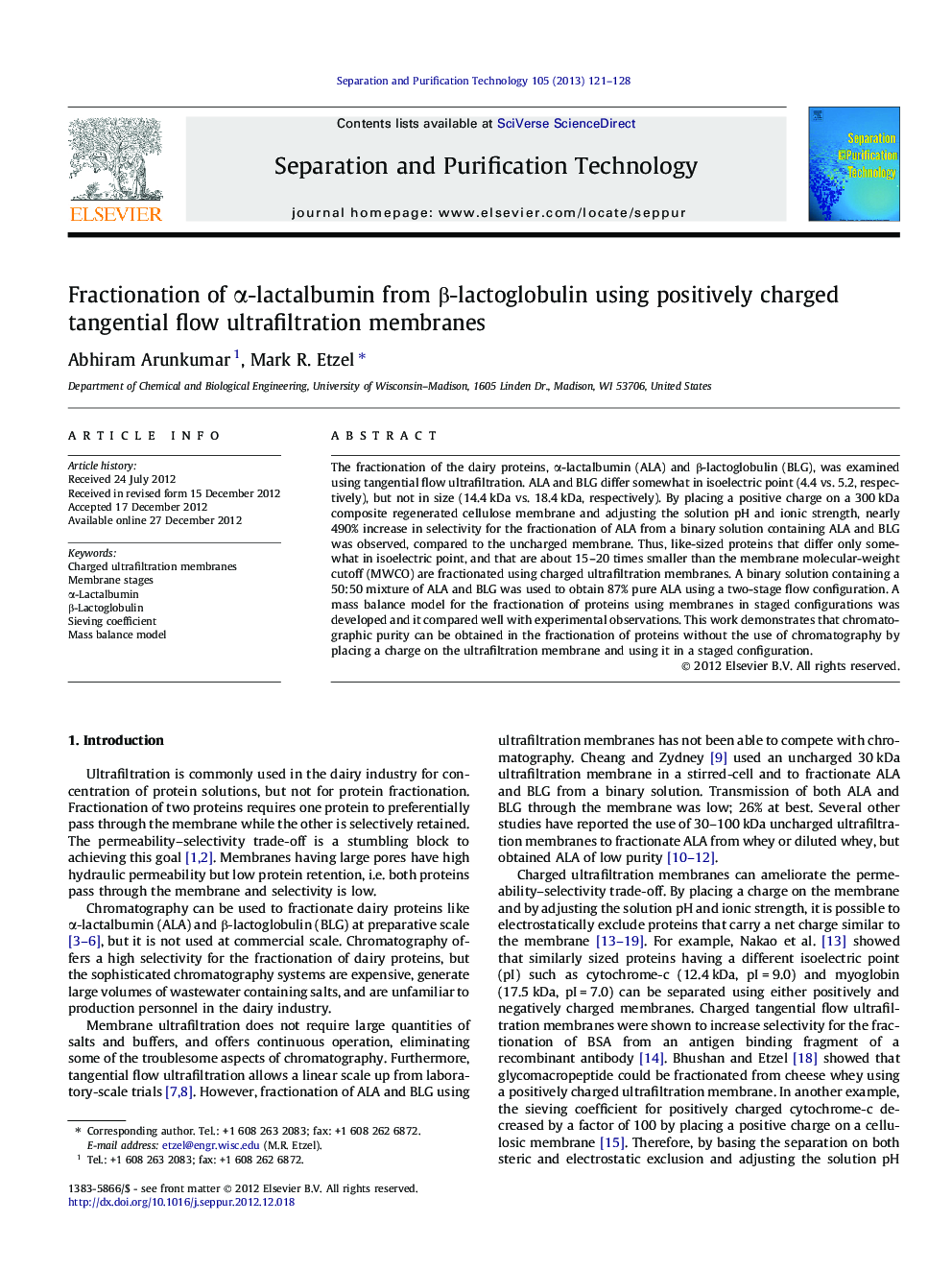| Article ID | Journal | Published Year | Pages | File Type |
|---|---|---|---|---|
| 641728 | Separation and Purification Technology | 2013 | 8 Pages |
The fractionation of the dairy proteins, α-lactalbumin (ALA) and β-lactoglobulin (BLG), was examined using tangential flow ultrafiltration. ALA and BLG differ somewhat in isoelectric point (4.4 vs. 5.2, respectively), but not in size (14.4 kDa vs. 18.4 kDa, respectively). By placing a positive charge on a 300 kDa composite regenerated cellulose membrane and adjusting the solution pH and ionic strength, nearly 490% increase in selectivity for the fractionation of ALA from a binary solution containing ALA and BLG was observed, compared to the uncharged membrane. Thus, like-sized proteins that differ only somewhat in isoelectric point, and that are about 15–20 times smaller than the membrane molecular-weight cutoff (MWCO) are fractionated using charged ultrafiltration membranes. A binary solution containing a 50:50 mixture of ALA and BLG was used to obtain 87% pure ALA using a two-stage flow configuration. A mass balance model for the fractionation of proteins using membranes in staged configurations was developed and it compared well with experimental observations. This work demonstrates that chromatographic purity can be obtained in the fractionation of proteins without the use of chromatography by placing a charge on the ultrafiltration membrane and using it in a staged configuration.
► First to use charged ultrafiltration membranes and stages for protein fractionation. ► Mass balance model developed for staged membrane separations. ► First to fractionate proteins 15–20 times smaller than the membrane MWCO. ► Show that charged membranes can overcome permeability–selectivity tradeoff. ► Demonstrate chromatographic purity using stages of charged ultrafiltration membranes.
